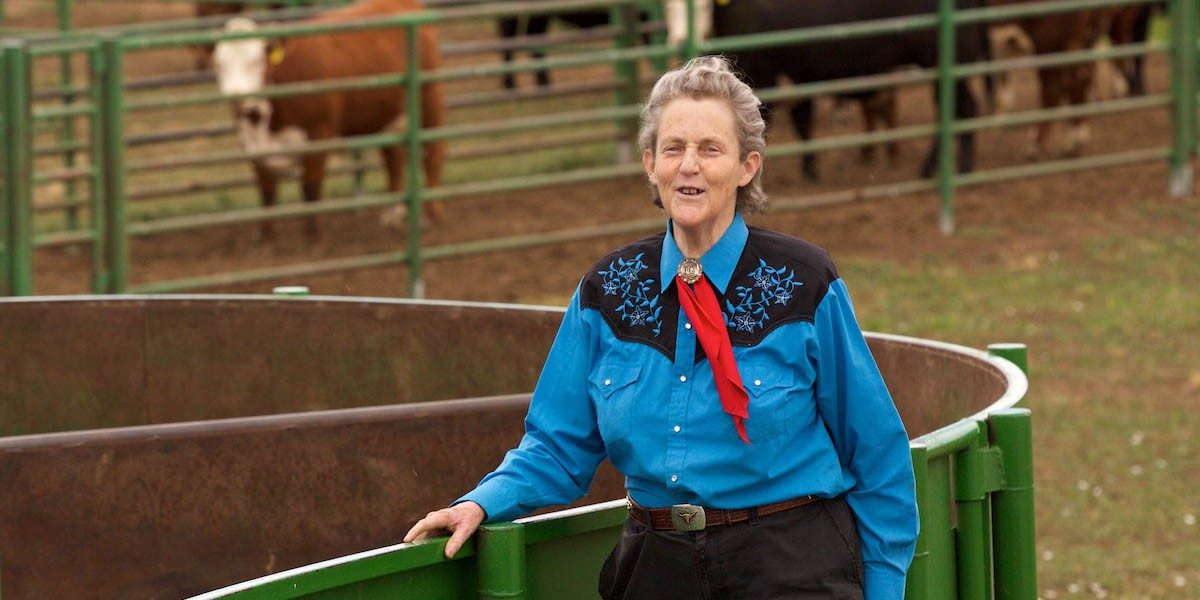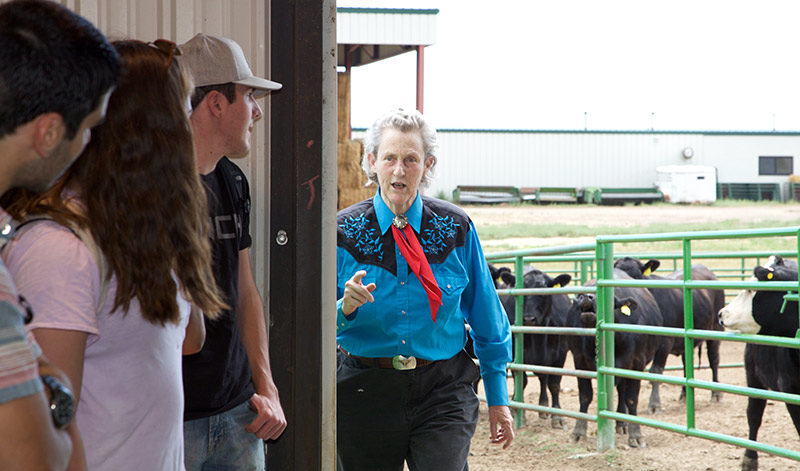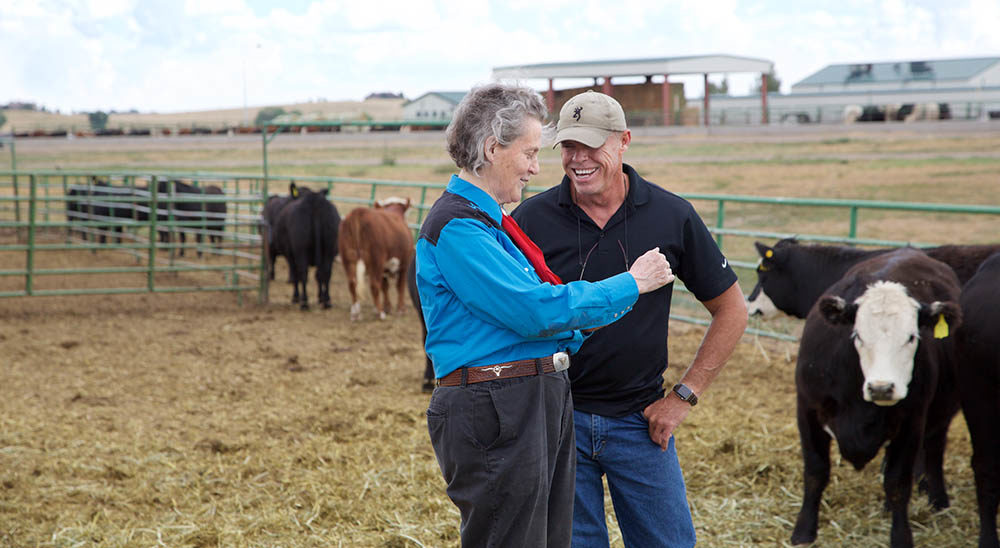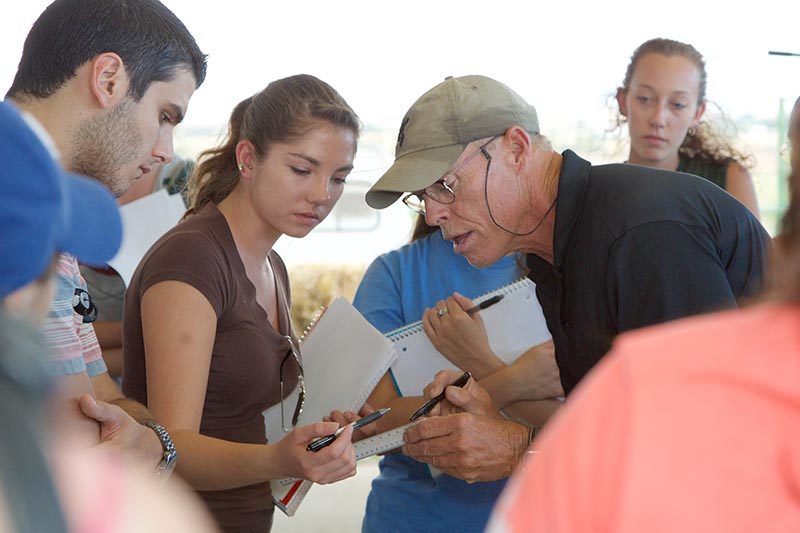
As the students gather around, Dr. Grandin asks her first question:
"Who here has never touched a cow?"

Since then, autism has continued to define her existence, but in a way that has led to uncanny insights into the minds of animals. Her ability to see in pictures and sense the things that spook them - a waving flag, for example, or a reflection in a puddle - has led her to create more humane livestock handling systems. And more recently, autism has enabled her to better understand the minds of people and how it relates to their scientific abilities. It's an understanding that has led to a new calling - as role model and mentor for school children - which she pursues as fervently as her livestock business and long-time autism advocacy.
A day earlier, she drove three hours each way to a school in Pueblo, Colorado, to spend time with fifth-graders. She talks with passion about meeting with young people, especially those who might have trouble finding their strengths and the career paths they can lead to.
"I'm interested in turning on young students," she says. "I want to get kids back to doing hands on things. We're got kids today who don't know how to use scissors and a hammer." But beyond that, she wants to see them find their place in the world of science.
"Different people bring in different strengths," she says. "For me to try to be a computer programmer is pretty stupid; that's not going to work." Computer science is too abstract for her, she explains, but as a visual thinker, she brings something just as important to science:
When I look at the methods of an experiment, I see the actual animals, I see the experiment. So when I review journal articles, I tend to really go over the methods: the sampling procedures, what kind of animals they use. Other people are tearing apart the statistics, and I'll (notice) they didn't even tell me what breed of pig they used in the experiment. And that can affect the results in a really bad way.[...]

In her own career, she has spent nearly a quarter century collaborating with a man from a very different background than her own. Mark Deesing couldn't afford to go to college, so he made his living doing what he knew: training horses and fitting them for shoes. But his lack of formal education came back to haunt him when he came up with a unique theory about animal behavior - that the position of the hair whorl on a horse's head is related to temperament - but couldn't get anyone to take it seriously in the scientific community. Except for Dr. Grandin.
Deesing impressed Dr. Grandin with his keen observation skills and his desire to do scientific research. She taught him how, and the two have since published their research in journals and a book published by Elsevier in 2013: Genetics and the Behavior of Domestic Animals. Now Deesing travels around the world building livestock handling facilities that are better for the animals and the businesses alike.

Despite sharing Grandin's visual acuity and penchant for detail, Deesing is a world apart from her when it comes to daily life: he's not autistic. Yet he credits her with teaching him about much more than how to be a scientist. "Even though she's autistic," he says, "she's such a moral and ethical person. She understands the rules of being human, the rules of ethical behavior, the rules of morality. So she's taught me to be a more ethical person. And she's always reminding me what's right and how to proceed with people and situations."
Continue reading the full article at Elsevier



Comment: